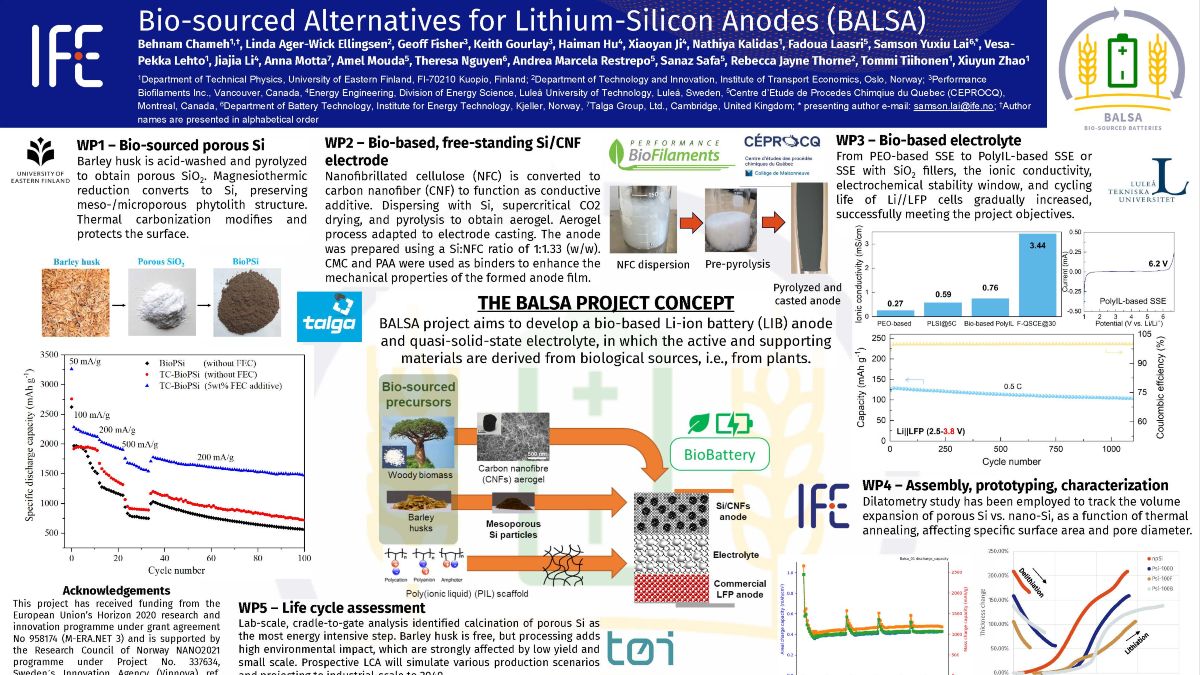Bio-sourced Alternatives for Lithium-Silicon Anodes - BALSA
Project summary
The rationale of the BALSA project is a growing concern over the raw materials supply required to the projected explosive growth in Li-ion battery production, especially of critical metals like Co and Cu. One potential solution to this problem is to develop a battery which is mostly composed of bio-sourced functional materials, thereby addressing both the technological and societal needs for the European Green Deal and skilled job creation in rural, agricultural regions. The objective of BALSA is to combine a mesoporous, surface-passivated Si and carbon nanofibre composite anode with a quasi-solid-state electrolyte with reduced copper weight and carbon footprint. Once prelithiated and assembled, the BALSA battery would find potential applications in electric vehicles or other consumer electronics. The success of BALSA would impact advocacy for greater use of bio-sourced materials in other technologies and create new economic opportunities as an exploitable benefit to the industry.Project Details
Call
Call 2021
Call Topic
Functional materials
Project start
01.06.2022
Project end
31.05.2025
Total project costs
1.984.588 €
Total project funding
1.684.556 €
TRL
2 - 4
Coordinator
Dr. Samson Lai
samson.lai@ife.no
Institutt For Energiteknikk, Instituttveien 18, 2027 KJELLER, Norway
Partners and Funders Details
| Consortium Partner | Country | Funder | |
|---|---|---|---|
| Institutt For Energiteknikk https://www.ife.no/en |
Research org. | Norway | NO-RCN |
| University of Eastern Finland https://www.uef.fi |
University | Finland | FI-AKA |
| Luleå tekniska universitet |
University | Sweden | SE-VINNOVA |
| Talga AB |
SME | Sweden | SE-VINNOVA |
| Centre d’études des procédés chimiques du Québec |
Research org. | Canada | CA-PRIMA |
| Performance Biofilaments, Inc. https://www.performancebiofilaments.com/en |
SME | Canada | No Funding |
| Transportøkonomisk Institutt https://www.toi.no |
Research org. | Norway | NO-RCN |
Keywords
bio based composites, green materials, life cycle assessment, waste biomass, porous materials, silicon, passivation layer
